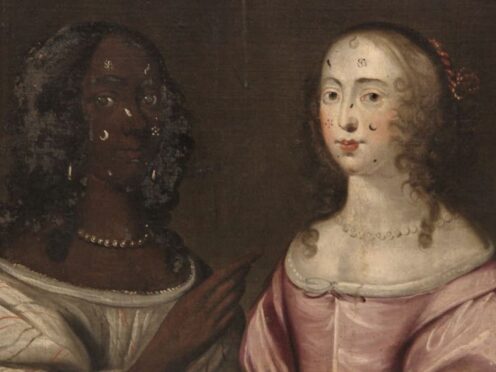A painting from around 1650 depicting two women, one black and one white, as companions and equals could leave Britain’s shores unless a UK buyer comes forward for the £272,800 work.
Arts minister Lord Parkinson of Whitley Bay has placed a temporary export bar on Allegorical Painting Of Two Ladies, English School in the hope it can be acquired for the nation.
The anonymous work shows the women side by side with similar dress, hair and jewellery.
The depiction of a black female sitter in a 1650s painting was highly unusual and the image invites debate about race and gender during the period, according to the Department for Digital, Culture, Media and Sport.
Both figures sport numerous beauty patches on their faces and experts suggest the painting is a “sternly moralising picture that condemns the use of cosmetics”.
Despite them being popular at the time, the painting appears to condemn wearing these “spots” via an inscription above the women which claims wearing beauty patches is a sin of pride – an idea popular at the time.
Lord Parkinson said: “This fascinating painting has so much to teach us about England in the 17th century, including in the important areas of race and gender, which rightly continue to attract attention and research today.
“I hope a gallery or museum in the UK can be found to buy this painting for the nation, so that many more people can be part of the continuing research and discussion into it.”
The move follows the advice of the Reviewing Committee on the Export of Works of Art and Objects of Cultural Interest (RCEWA).
Committee members Pippa Shirley and Christopher Baker said in a joint statement: “This anonymous painting is a great rarity in British art, as a mid-seventeenth century work that depicts a black woman and a white woman with equal status.
“It is not a portrait of real people, as far as we know, but the inscription reveals that it is in fact a sternly moralising picture that condemns the use of cosmetics, and specifically elaborate beauty patches, which were in vogue at the time.
“Although not distinguished artistically, its imagery relates in fascinating ways to contemporary stereotypes of women, fashion and, through the juxtaposition of the figures, race.”
